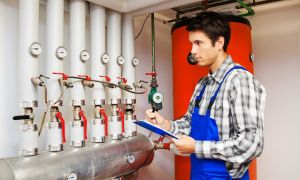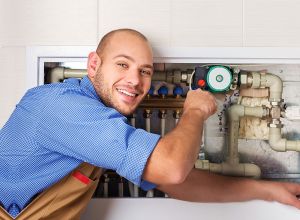Should I consider alternative sources for the energy to run my home?
Its Green, it’s fashionable, it will save the planet and they say it will save us money so why aren’t we queuing up for it?
What exactly are we talking about?
We live in a world where we are using up finite resources to provide our energy and unless we stop relying on carbon fuels we will turn our planet into an airless moon that will not sustain life as we know it.
The latest oil spill tragedy in the Gulf of Mexico has highlighted even to the energy hungry USA just how fragile is our eco structure.
But what are the alternatives of renewable energy that could be considered for the home?
The Sun – Solar Energy
If you are building a new house design techniques can be used to harness the free energy in the sun such as greenhouses and for light.
An Active Water/Air heating system can be installed to generate low temperature hot water from daylight. These systems are black panels that absorb daylight to heat a liquid (either water directly or an anti-freeze system through a heat exchanger). These systems usually have roof mounted panels and a larger than normal hot water tank to store the heated water. You do need to have space on the roof for the panels to face the East to South to West side of the building.
Photovoltaic (PV) Solar panels which are arranged facing South-East to South-West harness sunshine to generate electricity. There are a number of technology options with slightly differing efficiencies (costs are offset against efficiency). The panels supply electric power to an inverter which converts the direct current (DC) generated into alternating current (AC). This can be stored in a battery or you can connect into the grid where you can be paid for the electricity you generate by your local electricity provider.
So which should we consider?
Solar water heating systems to work alongside your conventional water heater
This technology is well developed with a large choice of equipment to suit many applications.
Benefits of this solar heating system
It can provide almost all of your hot water during the summer months and about 50% year round
It reduces your impact on the environment – the average domestic system reduces carbon dioxide emissions by around 400kg per year, depending on the fuel replaced.
Different Types Of Solar Heating System
What best suits your needs depends on a range of factors, including the area of south facing roof, the existing water heating system (e.g. some combi-boilers are not suitable) and your budget.
A competent professional installer should assess your situation and discuss with you the best configuration to meet your needs. Please contact us at info@1staction.com or call us on 02070600707 for further information
Solar Water Heating and Your Home
Solar water heating can be used in the home or for larger applications, such as swimming pools.
For domestic hot water there are three main components: the solar panels, a heat transfer system and a hot water cylinder. Solar panels, or collectors, are fitted to your roof. They collect heat from the sun’s radiation. The heat transfer system uses the collected heat to heat the domestic hot water. A hot water cylinder stores the hot water that is heated during the day and supplies it for use later.
Is My Property Suitable for solar heating?
Preferably you will need 2-4m2 of Southeast to Southwest facing roof receiving direct sunlight for the main part of the day. You’ll also need space to locate an additional or larger hot water cylinder, if required.
It may be necessary to gain planning permission to allow you to fit a Solar system, especially in conservation areas or on listed buildings. Always check with your Planning Department before you have a system installed.
Cost and Maintenance
The typical installation cost for a domestic flat plate collector system is £2,000 – £3,000. or an Evacuated tube systems will cost £3,500 – £4,500.
You can fit or build the system yourself. But although it may be cheaper it will take longer and you’ll need a certain level of skill. Note however that DIY jobs are not normally eligible for grant funding.
A Solar hot water systems generally come with a 10-year warranty and require very little maintenance. A yearly check by the householder and a more detailed check by a professional installer every 3-5 years should be sufficient. Your supplier will give you exact maintenance requirements.
Photovoltaic (PV) Solar panels
You can use PV systems for a building with a roof or wall that faces within 90 degrees of south, as long as no other buildings or large trees overshadow it. If the roof surface is in shadow for parts of the day the output of the system decreases.
Solar panels are not light and the roof must be strong enough to take their weight, especially if the panel is placed on top of existing tiles.
Solar PV installations should always be carried out by a trained and experienced installer.
By producing your own electricity you essentially become a supplier yourself. As well as producing electricity for your own needs, there will be times when your system produces more than you need. In this situation, the surplus electricity will be fed into the local network.
It is the responsibility of your chosen installer to ensure your system is installed according to the existing electrical installation regulations. It is also their responsibility to contact the local Distribution Network Operator to advise that a new PV system is being connected in their area.
The connection of PV systems to the electricity grid has become standard procedure and paperwork will likely be dealt with by the installer as part of the service.
Cost and Maintenance
Prices for PV systems vary, depending on the size of the system to be installed, type of PV cell used and the nature of the actual building on which the PV is mounted.
For the average domestic system, costs can be around £4,000- £9,000 per kWp installed, with most domestic systems usually requiring between 1.5 and 2 kWp.
A further option is solar tiles which cost more than conventional panels and also panels that are integrated into a roof are more expensive than those that sit on top.
Planning Considerations
It may be necessary to gain planning permission to allow you to fit a PV system, especially in
conservation areas or on listed buildings. Always check with your Planning Department before you have a system installed
Funding
For Solar PV systems there is grant maximum of £3,000 per kWp installed, up to a maximum of £15,000 subject to an overall 50% limit of the installed cost (exclusive of VAT)
Please note that prior to issue of any grant towards renewables, the BERR will ensure the applicants property has already been made efficient in its energy use.
As one of the biggest London plumbing companies we can also supply and fit new gas boilers should you need to or we can fix most makes of boiler within our initial agreed time slot. Our heating engineers are very experienced and will be happy to fix any problem you may have. If you have blocked drains and need them unblocking or whatever plumbing issue you have dont delay and call 1st Action Plumbing London and we will be more than happy to offer you our fast and reliable service that can’t be beaten!


